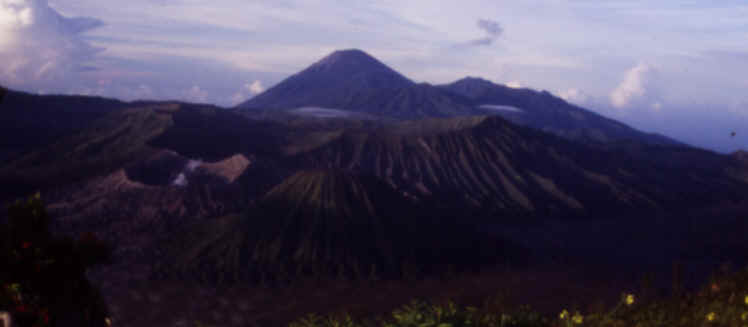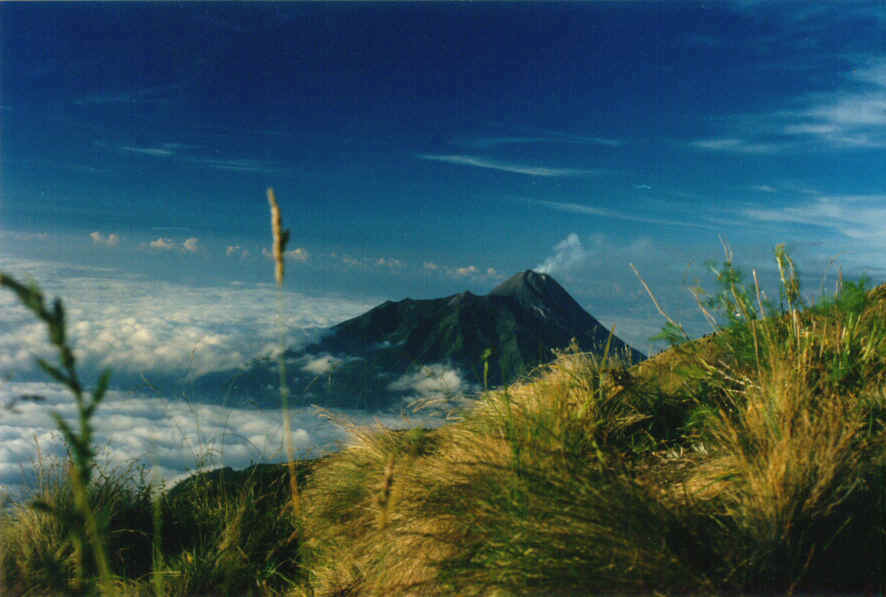INDONESIAN VOLCANO
![]()

Mt. Bromo, Batok and Semeru (East Java) |
"Semeru is actually a fragment of the world's holiest Hindu mountain, that of Gunung Mahameru in the Himalayas. The gods, who needed a sacred abode once they settled on Java, ordered a band of monkeys to fly the summit back from mainland Asia to their island. However, as the playful monkeys transported the mountain, they underestimated its |
weight and accidentally broke it into three pieces. The largest bit landed on Bali to become Gunung Agung, the top slid off to become the small cone of Gunung Penanggungan near Tretes, and the third chunk landed as Gunung Semeru, with fragments that scattered in between them creating summits of Welirang, Kawi, Kelud, Wilis, and Lawu"
This is only one example. There are more myths like this which have not been explored. Such as people's belief of the color of Gunung Kelimutu crater lake from Flores, legend of giant eel from Gunung Lore Lindu, and the legend of Dayang Sumbi from Gunung Tangkuban Prahu, etc.
| Five out of seventeen greatest volcanoes explosion listed in Guinness Book of World Records are from Indonesia. The 1883 eruption of Krakatau off Java's western coast is probably the most well-known; not only were its effects seen and felt around the world, but it destroyed entire coastal villages and changed the shape of the land. The dead of Krakatau is actually only one tenth of Gunung Tambora's eruption in 1815. 40 cubic kilometer had been erupted, as well as the | 
Smolder peak of Mt. Merapi (Central Java) |
12,000 deaths resulting from the direct effects of the eruption, another 80,000 starved or succumbed to disease as crops died and water was contaminated. The effects were not to stop there, however, and the mire-like ground conditions which hindered Napoleon en route to defeat at Waterloo, have been attributed to unseasonably heavy rains caused by changing weather patterns wrought by the huge quantities of ash and sulphur aerosols ejected into the atmosphere by the eruption. Mid-year snows and frosts in both Europe and North America ensured that the following year 1816, was labeled the 'Year without a Summer'.
The destructive force of volcanoes can also bring the fertile soils of the vast plains which are Java's 'rice-basket'. The cooler climate of their slopes precipitates rainfall and nourishes huge plantation of tea, timber, and cornucopia of edible, and other commercial plants.